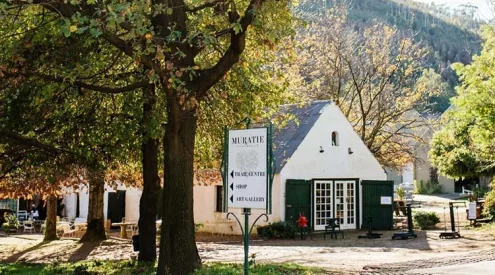South Africa’s coast has long been known as a treacherous voyage for ships. The route around the Cape is called the Cape of Storms for a reason.
While not many ships have run aground recently, with the improvement of technology and centuries of knowledge of the rocky shore serving those on this passage well, some shipwrecks from bygone eras are dotted along the coastline.
Although many of the over 40 shipwrecks along the coast have been scrapped, a few still stand decaying among the rocks or on the beach. If you’re interested in their history and want to take a closer look without putting on a wetsuit, then consider exploring some of these famous wrecks.
BOS 400, Western Cape
View this post on Instagram
One of the most well-known wrecks, especially because of the number of Instagram posts of it, the BOS 400 is an easily accessible wreck. The floating crane was, at the time of its demise in 1994, the biggest floating crane in the country. This lay barge ran aground while being towed by the Russian tugboat Tigr. It was being towed during a heavy storm and the tow-rope broke, resulting in the barge crashing into the rocks off DuikerPoint near Sandy Bay.
How to get there:
You can park at the Sandy Bay car park and look to the wreck from there. You’re not encouraged to visit the wreck but you can figure a way down to it at your own risk from the parking lot.
Jacaranda wreck, Eastern Cape
View this post on Instagram
This wreck can still be found rusting on the beach near Qolora Mouth on the Wild Coast. The Greek-owned ship ran aground in 1971 due to strong winds. All 15 crew members and the captain’s wife survived the incident. Despite their best efforts, the impressive winds proved too strong for the anchors which attempted to keep the ship stable and it ended its fate on the sandy shore.
How to get there:
If you’re driving you will need a 4×4 to get to the wreck as the roads are sandy tracks. You will be taken down to the beach where the wreck is found if you follow GPS coordinates for its location.
RMS Athens, Western Cape
View this post on Instagram
This is one of the easiest to visit though you will have to look at it from the shore. Found off the beach at Mouille Point, all that’s left of the wreckage is the engine block peeking out from the rocks. Depending on the tide, you can see more or less of it. The Royal Mail Ship ran aground in 1865 on an evening of classic Cape winds. Reports said the ship was overcome by a massive wave. Stories of the wreckage day that all the crew died with only a pig making it to shore.
How to get there:
It’s easy, park along Beach Road in Mouille Point almost near the bed to the Waterfront. From the shore, you will be able to spot the part sticking out of the ocean.
Nightingale Shipwreck, Kwa-Zulu Natal
View this post on Instagram
This steam vessel is one of only a few off the KwaZulu-Natal coast and is among the more accessible. The steam vessel Nightingale ran aground on the rocks off Glenmore beach in 1933. Heavy fog that day made it harder to see the coast resulting in the accident. Survivors of the wreck were helped by those on the shore, where the Nightingale restaurant now stands.
How to get there:
You can see the boiler and cylinder on the rocks at low tide by making your way down to the beach.
Meisho Maru 38 Shipwreck, Western Cape
View this post on Instagram
This Japanese shipping vessel met its end in 1982 off the southernmost tip of Africa. All 17 crew survived by swimming to safety but the ship remains a rusting hulk on the shore. While it did eventually break apart the prow still sits a short walk away from the Cape Agulhas lighthouse.
How to get there:
It’s about a 20-minute walk from the Cape Agulhas lighthouse, you can ask the information inside if you need to be steered in the right direction.
Thomas T. Tucker Wreck, Western Cape
View this post on Instagram
Cape Point is home to so many shipwrecks they have a number of trails just to see them. This trail is the shortest and easiest to access. The SS Thomas T. Tucker, also called the liberty ship, was built in the US and carried troops and weapons during WW II. It wrecked on the rocks in 1942 while attempting to avoid detection by German U-boats. In order to save themselves from the foggy weather, the crew ran her ashore believing they were running her into Robben Island. They left the ship behind to rust into pieces.
How to get there:
The trail starts at the Olifantsbos parking lot and yellow markers will keep you going along the route until you reach the shipwreck.
Picture: @dronenamibia/Instagram
















